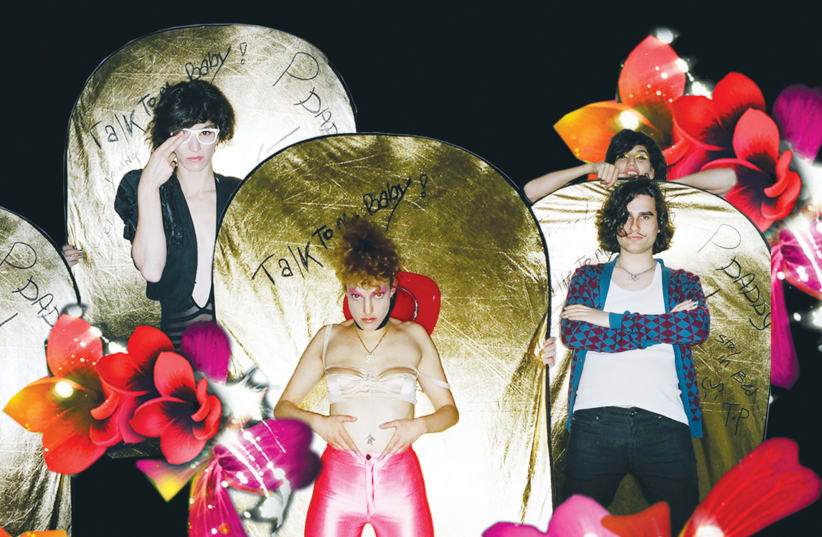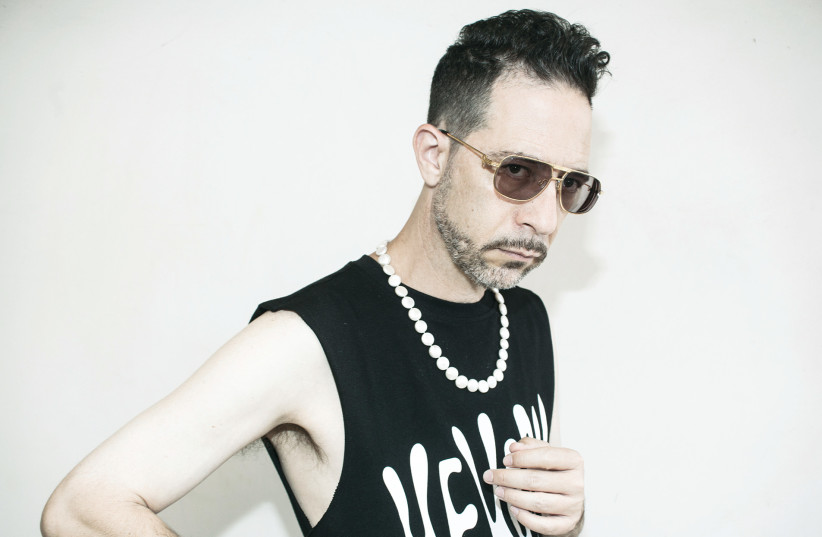A picture is beginning to emerge, in entertainment-cultural circles, of some kind of configurative pattern. A glance back at this year’s Israel Festival programming roll-out reveals a definitive bias toward the performative side of the presentational tracks. That line of thinking is also central to the Nitzotzot (Sparks) event, which takes place at the Tel Aviv Museum of Art on September 29.
Even for a constantly morphing arts scene, in which we are gradually becoming accustomed to encountering unexpected offerings, Nitzotzot comes across as something pretty far from the beaten track. Then again, considering the eclectic oeuvre to date of artistic director Nadav Barnea, perhaps that should come as no surprise.
“I am a multidisciplinary artist,” he notes. “I work in lighting and also write music for theater and dance. There’s never a dull moment for me,” he adds somewhat superfluously.
“I am a multidisciplinary artist. I work in lighting and also write music for theater and dance. There’s never a dull moment for me.”
Nadav Barnea
It is a fair bet that no one who goes over to the museum on Thursday, at 7:30 p.m., will be yawning from boredom.
An A-lister cast at the Tel Aviv Museum of Art
Nitzotzot is described as “a one-time evening at the museum” and features an expansive A-lister cast. And it is not just the caliber and public profile of the participating artists that catches the eye. Barnea has put together some intriguing pairings for the proceedings. Consider, for example, film critic and lecturer Shmulik Duvdevani joining forces with film director, screenwriter, animator and film score composer Ari Folman, who is best known for his work on Oscar-nominated animated documentary Waltz with Bashir.
There is also a tête-à-tête lined up between journalist and scriptwriter Dana Modan, and film director and scriptwriter Talya Lavie, while internationally renowned author Etgar Keret’s confluence with singer, visual artist, writer and actor Gilad Kahana should deliver on the excitement front and possibly even produce a handful of sparks.
I wondered how much of the Nitzotzot programming was well structured and how much was left open, to allow the artists to go off on tangents as and when the mood takes them.
“I don’t know how much improvisation there will be,” says Barnea, while confessing that he is not entirely sure how things are going to pan out on that night. “I think that with, for example, Etgar Keret and Gilad Kahana there will probably be some on-the-fly stuff in there. Everything happens live and just the one time.”
Still we are talking seasoned professionals here, and all the artists have accrued rich experience in their respective fields, and possess the performance acumen to know instinctively when to loosen the leash and when to reel it back in.
“These are people who know what they are doing, and are accustomed to being in front of an audience,” Barnea notes. “It is just an unusual activity. Something that doesn’t happen in the ordinary run of things.”
You can say that again. Jazz fans may have become used to catching gigs in the Israel Museum at the annual Jerusalem Jazz Festival, whereby there is some degree of dialogue between the sonic output and the works of art hanging on the walls in their appointed gallery space.
That, says Barnea, will necessarily also come into play in Tel Aviv and helped to fire his own creative mindset. And there is another layer to the programming anchor.
“What really drew me to this event is that it is happening inside a museum. I wanted to bring Israeli cultural figures, all sorts of artists, and expose their sources of inspiration to the audience. That key led to unconventional combinations. This type of event, anyway, is not conventional by dint of the fact that it is taking place in a museum.”
Therein lies of the possibility of an extra dimension working its way through the performative fabric. “I think that is what facilitates a feeling of [artistic] freedom which may not be possible in other places, such as standard concert auditoria.”
SOUNDS LIKE perfect sense to me, and Barnea says he expects the program to appeal to a broad range of culture consumers, and plenty of them. I get an initial sense of that when the artistic director mentions Neta Weiner, who shares Barnea’s divergent take on performing endeavor.
Actor, writer, director, choreographer and social activist, Weiner will be in peripatetic mode on the night as he enlightens his audience about some of the works of art on show at the art repository.
“The fact that these stops, with [performance art] content, are located in a museum. That already generates interest. That connects the interior world of the museum and the outer world that we bring there.”
That is a salient point, as museums the world over seek to redefine their roles in society, and vis-à-vis the community at large. During the corona constraint era, for example, Tel Aviv Museum began projecting giant images of works of art on the outside of its own walls, and at various spots around Tel Aviv. The thinking was, if we can’t bring people to art we have to bring art to the people.
That philosophy adds a fascinating facet to Nitzotzot, and Weiner and his colleagues intend to make the most of it.
“Neta, for example, will take groups of 200 people to the Israeli Art gallery. Each time he will stop in different places around the gallery. He will use texts and performance art and music that reference the exhibits. If he did that in a regular auditorium that would involve a different context.” And, hence, evoke a different channel of artistic expression.
The size of Weiner’s groups indicates that Barnea believes the event will bring in the crowds.
“This is a very big evening. We are talking about a total attendance of 2,500 people.”
Barnea is confident there is the creative collateral there to account for the ticket sales forecast.
“The evening will be loaded with content and, I am sure, with audiences.”
The increasing willingness of museums and other arts institutions to stray beyond their traditional, concrete, borders is, says Barnea, a welcome development and one that should lead to a healthier approach to culture in general.
“The Tel Aviv Museum, and others like it, are nurturing more openness. I felt that from [Tel Aviv Museum contemporary art curator] Ruth Direktor, and a great willingness to introduce this kind of [Nitzotzot] content into the museum. That is not something you can take for granted. The museum is not the natural location for this kind of content.”
That may be so at present, but we will probably begin to see more and more seemingly incongruous programs taking place in unlikely places.
This will, says Barnea, be a pretty full and free-flowing deal for one and all.
“This can be an invitation for a nighttime occasion, with people roaming from place to place, with alcohol and food. It will be a less formal event.”
As the program title suggests, Nitzotzot may very well provide the spark for a whole new stimulating cross-disciplinary cultural experience just waiting for us to imbibe at our leisure and, no doubt, pleasure.
For tickets and more information: https://www.tamuseum.org.il/he/event/sparks-290922/2022-09-29/













